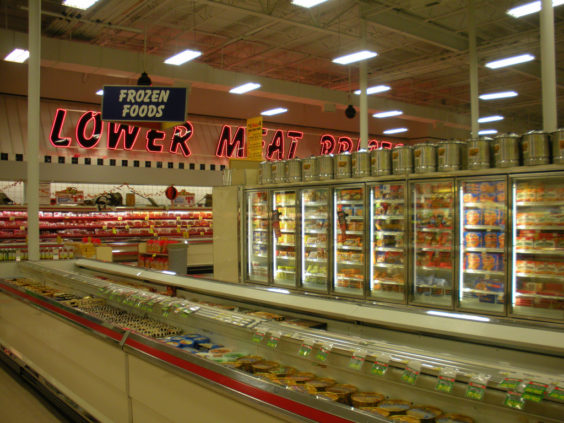
Some products you can get for next to nothing, if you wait for a sale and have a coupon. For other products, you have to resign yourself to paying full price. But still other products can be available at a great price – without forcing you to wait for a sale or a coupon at all.
With grocery prices falling over the past year, the market research company Price-Trak examined the data to see precisely where prices were falling the most. What it found was that, by buying certain products lately, you can save a bundle – even if you leave your coupons at home.
Frozen meat was the best value last year, as compared to the year before. List prices in that category fell 18%. Other products in the frozen food section, such as frozen desserts and frozen fruit, also saw significant price declines. As a category, frozen foods saw the largest decline last year, with frozen products costing an average of 8% less than the year before.
“What was interesting is that frozen food prices were down across all eight of the frozen food categories we track, and suggests that manufacturers are focused on the price to value equation for the shopper,” Price-Trak president Andrew Rumpelt said in announcing the results.
Nonfrozen items like cheese, eggs, refrigerated meat and canned fish were also cheaper last year than the year before.
But not everything is less expensive than it used to be. Among food items, the prices of syrup and packaged dessert items went up the most, by 7% each. And household products saw some of the steepest price hikes. Dish soap was up 8%, oven cleaners up 10% and laundry treatment prices were up a whopping 19%.
It’s a good thing, then, that there are more coupons available for nonfood items these days. Let people who don’t clip coupons pay those higher prices.
Overall, though, there were fewer coupons available last year, no matter what products you had in your cart. Brands are cutting back on consumer promotions like coupons, Price-Trak noted – but it says the money they spend on trade promotion is holding steady. The difference? Trade promotion dollars from manufacturers allow stores to, among other things, put products on sale.
Cereal led the way in that regard. If it seems at least one brand of cereal is always on sale at your store, you may be right. Nearly 20% of the list cost of cereal is allotted to trade spending, Price-Trak found. And that’s good news for both shoppers, and their stores. “Increased trade rates mean lower prices for the shopper, and lower prices mean more volume (for the retailer),” Price-Trak observed.
So coupons may be somewhat lacking lately. But there are still plenty of other ways to save. So you may want to make some room in your stockpile for more cereal, tuna and frozen food – as long as the price remains right.











Stopping in to say Happy Spring. As for coupons, I barely use them these days. Just a few here and there and those are mostly in-store coupons.
Happy Savings and boogie boogie.
Hello Ivy, great to hear from you – sorry to hear you and coupons broke up, but it probably does help make life simpler, doesn’t it?? Happy Spring and always good to have you stop by!